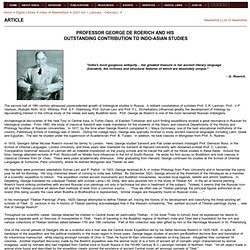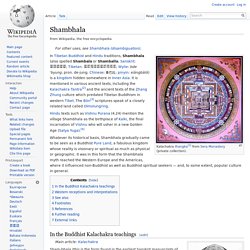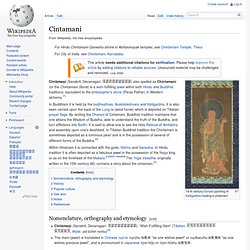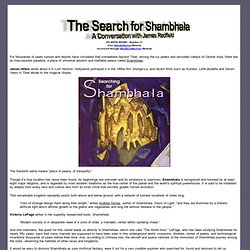

Nicholas Roerich. Nicholas Roerich Origins Nicholas Roerich was born St.

Petersburg, Russia on September, 27, 1874. He was born in the family of a famous notary Constantine Roerich. Nicholas Roerich’smother, Maria Kalashnikova came of a merchant family. The father of the future artist was not only a lawyer but also a forward public figure. At the age of eight Roerich to crossed the threshold of gymnasium. During the years in gymnasium he became drawn towards history and art more and more strongly. The literary gift of Roerich was revealed early. In 1891 the Roerichs’ friend M. Academy By Roerich’s admission he had started to be thought about entering the Academy of Arts since he was 16.
But his father told him firmly that he was going to give his son a juridical education, to make him a successor of his business who will be able to put his affairs and will be helpful to the native land. Professor George De Roerich And His Outstanding Contribution to Indo-Asian Studies. The second half of 19th century witnessed unprecedented growth of Indological studies in Russia.

A brilliant constellation of scholars Prof. C.R. Lanman, Prof.. V.P. Vasilyev, Rudolph Roth, W.D. Archaeological discoveries of the 'new Troy' in Central Asia, in Turfan Oasis, of Eastern Turkestan and such finding expeditions evoked a great resonance in Russian for Ideological studies. In 1918, George's father Nicolas Roerich moved his family to London. His teachers were prominent orientalists Sylvan Levi and P. In his monograph 'Tibetan Paintings' (Paris, 1925) George attempted to define Tibetan art, tracing the history of its development and classifying the three existing art schools of Tibet.
Throughout his scientific career, George retained his interest in Central Asian art particularly Tibetan. Shambhala. In Tibetan Buddhist and Hindu traditions, Shambhala (also spelled Shambala or Shamballa; Sanskrit: शंभाल; Tibetan: བདེ་འབྱུང་; Wylie: bde 'byung, pron. de-jung; Chinese: 香巴拉; pinyin: xiāngbālā) is a kingdom hidden somewhere in Inner Asia.

It is mentioned in various ancient texts, including the Kalachakra Tantra[2] and the ancient texts of the Zhang Zhung culture which predated Tibetan Buddhism in western Tibet. The Bön[3] scriptures speak of a closely related land called Olmolungring. Hindu texts such as Vishnu Purana (4.24) mention the village Shambhala as the birthplace of Kalki, the final incarnation of Vishnu who will usher in a new Golden Age (Satya Yuga).[4] Whatever its historical basis, Shambhala gradually came to be seen as a Buddhist Pure Land, a fabulous kingdom whose reality is visionary or spiritual as much as physical or geographic.
§In the Buddhist Kalachakra teachings[edit] Shambhala is ruled over by Lord Maitreya. Manjushri Yashas (Tib. Cintamani. Cintāmaṇi (Sanskrit; Devanagari: चिन्तामणि) also spelled as Chintamani (or the Chintamani Stone) is a wish-fulfilling jewel within both Hindu and Buddhist traditions, equivalent to the philosopher's stone (Paras Pathar) in Western alchemy.[1] In Buddhism it is held by the bodhisattvas, Avalokiteshvara and Ksitigarbha.

It is also seen carried upon the back of the Lung ta (wind horse) which is depicted on Tibetan prayer flags. By reciting the Dharani of Cintamani, Buddhist tradition maintains that one attains the Wisdom of Buddha, able to understand the truth of the Buddha, and turn afflictions into Bodhi. It is said to allow one to see the Holy Retinue of Amitabha and assembly upon one's deathbed. Utopia on the Roof of the World.
Svetoslav Roerich, Portrait of Nicholas Roerich, 1937.

Courtesy the Nicholas Roerich Museum, New York. Somewhere high up in the Himalayas, surrounded by a range of snow-capped peaks treacherous enough to defeat even the most intrepid mountaineer, lies a kingdom of unparalleled splendor, peace, and tranquility. This place, known as Shambhala, is home to palaces built of rare stone and pure gold and bedecked with a lapidary’s laundry list of precious gems, glasses, and colored corals. There are lakes where Shambhala’s noble, healthy, and prosperous subjects cavort in boats carved from jewels, and a lush sandalwood grove where they can peacefully contemplate an enormous, three-dimensional Mandala of unparalleled opulence.
But beyond this bountiful earthly splendor, Shambhala is also a privileged spiritual realm—those who are born there are guaranteed to achieve Enlightenment in the span of a single lifetime. The Search for Shambhala - A Conversation with James Redfield. ATLANTIS RISING - Number 21 from AtlantisRising Website recovered through WayBackMachine Website For thousands of years rumors and reports have circulated that somewhere beyond Tibet, among the icy peaks and secluded valleys of Central Asia, there lies an inaccessible paradise, a place of universal wisdom and ineffable peace called Shambhala.

James Hilton wrote about it in Lost Horizon, Hollywood portrayed it in the 1960s film Shangri-La, and recent films such as Kundun, Little Buddha and Seven Years in Tibet allude to the magical Utopia. The Sanskrit name means “place of peace, of tranquility.” Though it’s true location has never been found, its beginnings are unknown and its existence is unproven, Shambhala is recognized and honored by at least eight major religions, and is regarded by most esoteric traditions as the true center of the planet and the world’s spiritual powerhouse. Don Croner’s World Wide Wanders. The Central Asian Expedition of Nicholas Roerich - Reality and Fiction.